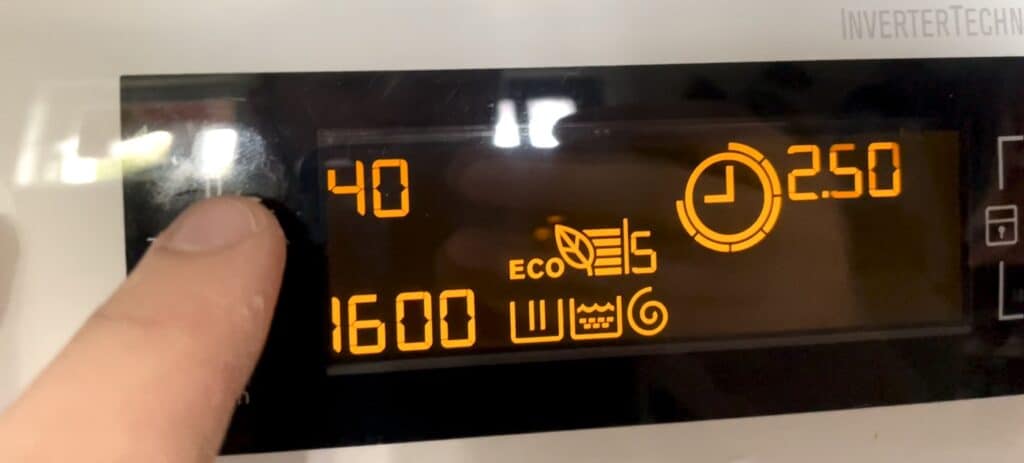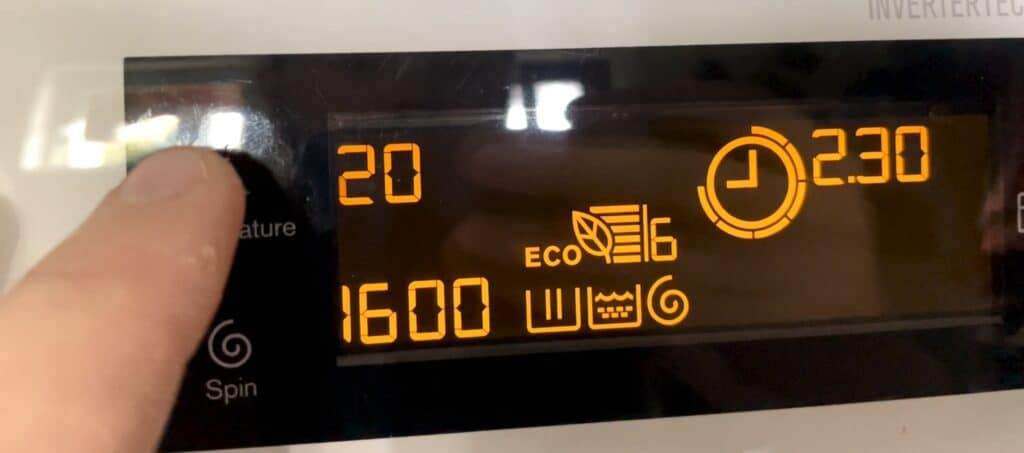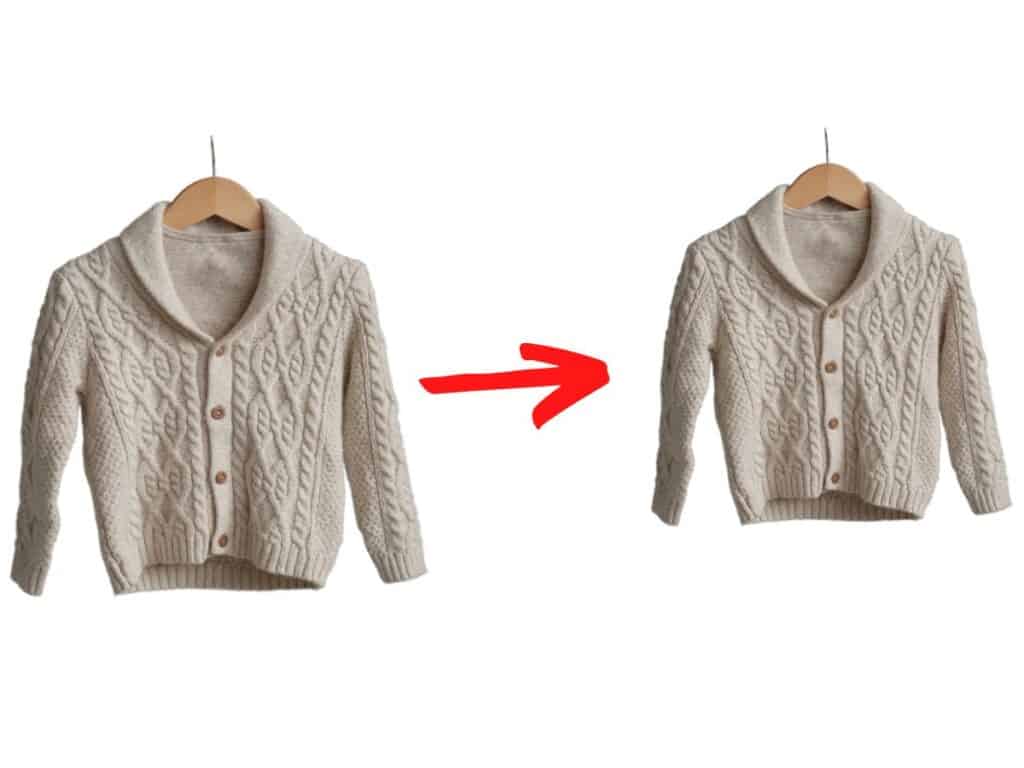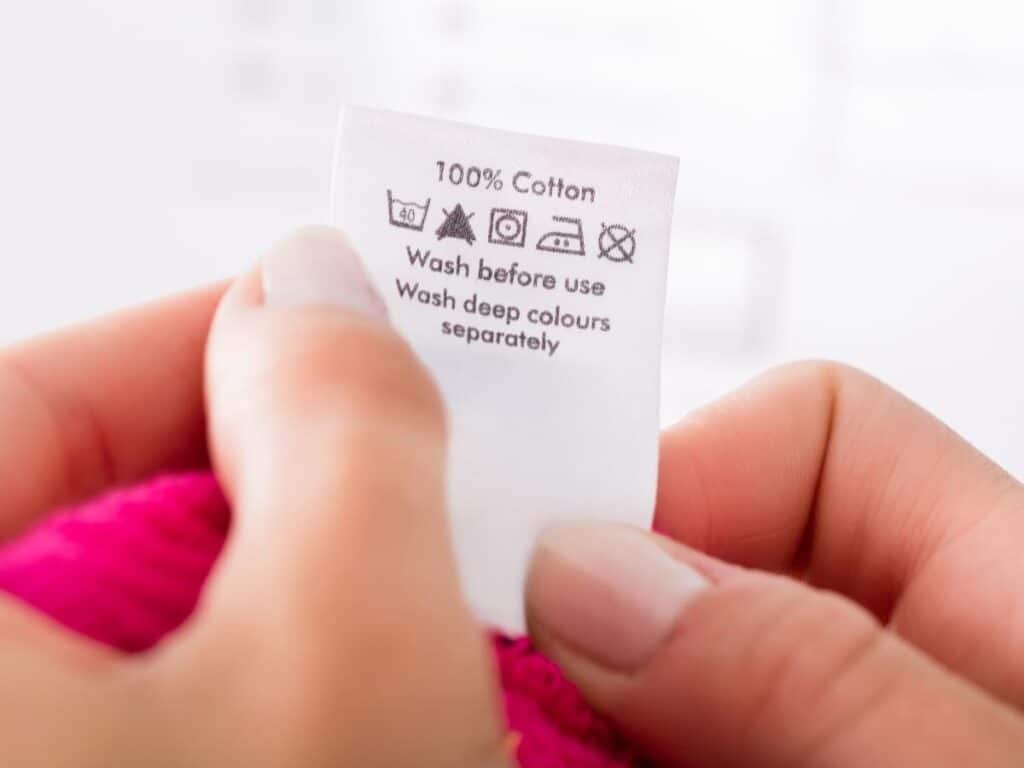The washing machine temperature setting is an essential consideration in the laundry. The common perception is that higher temperatures deliver a cleaner wash. But that is only partly true.
Higher temperature settings can ruin some fabric types and make other stains set. Nonetheless, whether you use higher or lower temperature settings, both have their merits and demerits.
In this article, we take a look at the 60/40/20 degrees celsius temperature levels, when to use them, and their pros and cons.
When to use 60/40/20 degrees celsius depends on the fabric type and the kind of stain. For delicate fabric and organic stains, you can use 20 degrees celsius.
In comparison, the settings for tougher fabrics, such as jeans with oily soiling, 40-60 degrees celsius setting would be the perfect fit.
Below is an illustration table showing different fabric types and their compatibility with different degree settings.
| Temperature Setting | Fabric Type | Soiling Level Requirements | Level Power Usage |
| 60 Degrees | Cotton shirts, dresses, heavy linen | Tough greasy stains | High power usage |
| 40 Degrees | Wide variety mid heavy fabrics | Mild-level of stains and soiling | Medium level of power usage |
| 20 Degrees | Delicate fabric; chiffon, silk, wool | Mild soiling | Low power consumption |
Temperature Guide to Washing Cotton at 60/40/20 Degrees Celsius
Washing at 60 Degrees Celsius
This is the hottest temperature setting found in most washing machines, save for a few with a temperature setting of up 90 degrees celsius.
Generally, this is considered the upper level of hot wash temperatures.
For that reason, it is the right heat for the removal of most stubborn stains, especially greasy ones.

This is the appropriate setting for washing most mid to heavy fabrics. That includes most towels, cotton shirts, dresses, bedsheets, and heavy linens. That aside, temperatures at this level will eliminate bacteria and other germs.
That makes it terrific for washing any cotton clothes for sick people or infants or as a general precautionary measure to eliminate bugs.
But keep in mind some bacteria have been known to survive at quite high temperatures. So, if you are keen on removing all kinds of bugs from cotton clothes, we advise using disinfectants in combination with disinfectants.
Another option is to use one of the very hottest settings on your washer like the steam setting or the sanitizer setting.
There are many commercial laundry-sanitizing liquids in the market you can use for this purpose.
One fantastic example is Lysol laundry sanitizing liquid, easily obtainable online or at the nearest convenience store or on Amazon through the link.
The only downside with this temperature is the power consumption, which will translate to higher utility bills.
Washing Cotton at 40 Degrees Celsius

This is one of the most popular temperature settings for washing clothes. The cotton at 40 degrees celsius is favorable for washing many fabrics as it is neither too hot nor cold.
At this temperature, you can wash heavy cotton, linen, and acrylic. Also, the power consumption at this temperature is low, translating to low power bills compared to cotton 60 degrees.
However, this might not be the best temperature program if you are dealing with heavy soiling, with a high probability of heavy bacteria infection.
Therefore be sure to wash it in combination with disinfectants to eliminate microorganisms.
The 20 Degrees Celsius Setting

This temperature setting is a recent introduction to curb high energy wastage. So do not be surprised not to find it in your washing machines.
Nonetheless, it is an excellent wash temperature setting on so many levels.
First, due to the low power usage, your utility bills are bound to be low compared to the higher temperature setting.
For instance, shifting from 60 degrees celsius to this setting has been proven to lower energy costs by a whopping 62%.
When it comes to washing quality, it performs relatively well, although it is still a trade-off. You can only expect to remove mild to mid-level soiling. Therefore do not expect to wash heavily soiled linen and cotton.
That aside, it is one of the most appropriate setting for delicate fabrics besides the actual delicate wash setting itself. Use it to wash silk, wool, chiffon, and laced and embroidered clothes.
A downside of this washing program is it may create problems in maintaining the washing machine.
Frequent use of this program increases mold and greasy grime build-up that may affect washer performance.
Check out my article on how to care for your washing machine here for tips on keeping your washer in tip-top shape.
Does Washing at 60 Degrees Shrink Clothes?

In general, 60 degrees is not considered a too high temperature setting to cause clothes to shrink. It is, for instance, incomparable to washing at the hotter 90 degrees.
However, this also depends on the fabric type. Avoid this setting on wool, acrylic, and silk, among other delicates. And on the plus side, washing at this temperature has greater chances of eliminating bacteria.
Do Cold Water Shrink Clothes?
Cold water is the best temperature for washing delicate clothes. Here, the temperatures are still minimal to cause any adjustment to the fabric structure.
Not only that, there is less stretching meaning the clothes are less likely to get torn and get ruined.
However, this may not be the best option for heavy soiling and, therefore, may not eliminate some of the stubborn grease stains.
Useful Wash Temperature Tips
Sort the Clothes Before Washing

Different fabrics require different wash temperatures. Be careful not to lump together all your clothes in one load to avoid ruining your clothes.
Separate delicates from heavy fabrics and wash them separately. That way, you can safely use one wash temperature setting and still get the best results.
For more detail, check out this step-by-step article on how to sort your laundry before washing.
Read the Care Label

This overrides any other information because different manufacturers make their fabrics with specific care instructions.
In other words, they know their products better than anyone else. Be sure to diligently follow this to avoid ruining your garment.
Pretreat Stains
High wash temperature helps in stripping most stains from clothes. However, that is not true all the time.
In some cases, high temperatures may make the stain set deeper into the clothes fabric, making it hard to remove.
So, it is best to always pretreat the stains first before washing them with clothes at high temperatures.
Which Is the Best Wash Temperature Setting?
As we found out above, there is no one-size-fits-all among the three programs we’ve discussed above. So when to use any of the above temperature settings will depend on several variables.
If you want a better quality wash but at a higher cost to your utility, you can use the hotter 60 degrees Celsius setting.
On the other hand, you can have a milder wash and save your delicates and energy costs by opting for a cotton 40 or 20 degrees celsius setting.
Final Thoughts
When to use any of the temperature settings we’ve discussed above is dependent on several factors. These range from fabric type and the level of soiling to energy and water conservation needs.
Therefore, make all these considerations next time before opting for any of the temperature settings.
I’ve created a comprehensive guide on how to use all the settings on your washing machine that may interest you to read next.

I’m an expert wardrobe organizer and a bit of a clean freak. I created this website and its YouTube channel to share practical guides about laundry and organizing. My teachings have been featured in multiple large news publications, and I’ve self-published two wardrobe organizing books and an entire course on the subject.

